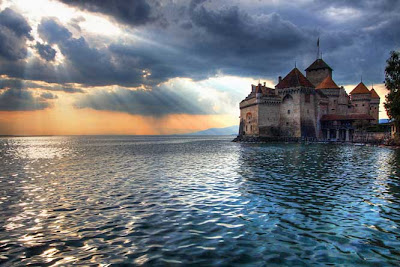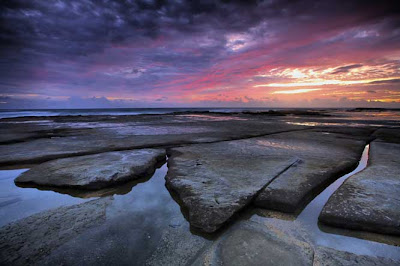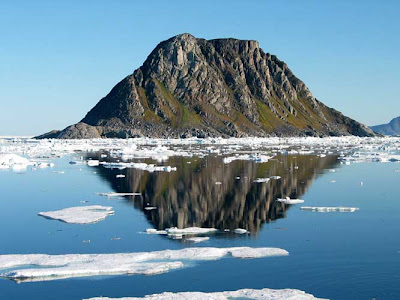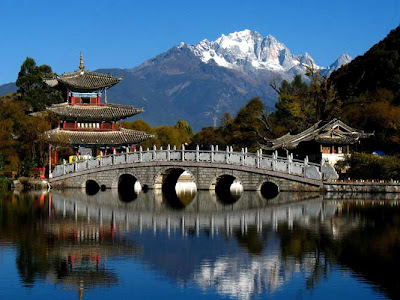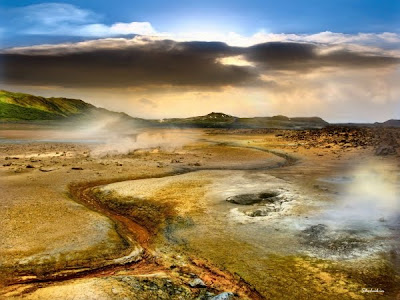The Best Landscape
March 7, 2010
I hope you have enjoyed our landscape photography tips and photos, please feel free to ask questions or leave your comments we love to hear from our readers. Happy snapping.
Vary your viewpoint
Don't take all images standing up or on a normal height tripod, changing the viewpoint of an image can dramatically change an entire shot. Shoot from different angles, move the camera off centre 'experiment'
Don't take all images standing up or on a normal height tripod, changing the viewpoint of an image can dramatically change an entire shot. Shoot from different angles, move the camera off centre 'experiment'
Reflections
Shooting with reflection can be simply stunning, for the best results be aware of your surroundings, a little wind even a slight breeze can ruin the effect. Scout around and see if you can find a wind break, often the smallest rise in the landscape can provide shelter to the wind so if possible walk around your subject and find the calmest point in which to shoot.
Shooting with reflection can be simply stunning, for the best results be aware of your surroundings, a little wind even a slight breeze can ruin the effect. Scout around and see if you can find a wind break, often the smallest rise in the landscape can provide shelter to the wind so if possible walk around your subject and find the calmest point in which to shoot.
Use filtersFilters are key to getting the right exposure and proper saturation when shooting. They allow you to carefully control your shot and make it as great as possible. Below I have listed three filters no landscape photographer should be without.
- UV: Actually this is one no photographer should be without. This filter never leaves my lens. It is perfect for protecting your expensive glass and also does a great job of helping colors pop.
- Polarizer: Polarizers are great for cutting through glare and bringing out more detail in water.
- Graduated Neutral Density: Neutral Density filters simply darken your lens to allow for slower shutter speeds without burn. A graduated neutral density filter is darker at the top and clear at the bottom. This allows you to darken a bright sky while leaving the ground untouched. Thus you will be able to shoot the ground and sky without over or under exposing part of your photo.
Composition
Think about what is in your shot, often landscapes without a specific focal point can end up well a little boring, take your time and visualise what you are trying to convey through the photo. The better you can visualise the more that idea will be portrayed through your photography.
Think about what is in your shot, often landscapes without a specific focal point can end up well a little boring, take your time and visualise what you are trying to convey through the photo. The better you can visualise the more that idea will be portrayed through your photography.
Experiment
Don't be afraid to try something new, a good artist forgets all the rules and makes their own. Once you know all the rules you can break them and see what your own creative input will produce.
Don't be afraid to try something new, a good artist forgets all the rules and makes their own. Once you know all the rules you can break them and see what your own creative input will produce.
Choose your times
Many landscape photographers never shoot during the day, they choose the Golden Hours, these are the sunrise and sunset hours and can often produce the best light. Light is your biggest friend or foe in photography so set your self up with the chance of taking the best pictures around the best times.
Many landscape photographers never shoot during the day, they choose the Golden Hours, these are the sunrise and sunset hours and can often produce the best light. Light is your biggest friend or foe in photography so set your self up with the chance of taking the best pictures around the best times.
Use what is around you
Think outside the box, if you are out and about and the day is not perfect it can be an opportunity to use everyday objects to bring a photo to life, the sheer contrast of the red against the grey overcast day produces a memorable photo.
Think outside the box, if you are out and about and the day is not perfect it can be an opportunity to use everyday objects to bring a photo to life, the sheer contrast of the red against the grey overcast day produces a memorable photo.
Work with nature
The sky can be as dramatic as your main focal point, allowing light to bleed into the shot also helps create mood within the shot. Great images don't mean sunny summer sky's all the time, winter sky produces some amazing drama to many landscapes.
The sky can be as dramatic as your main focal point, allowing light to bleed into the shot also helps create mood within the shot. Great images don't mean sunny summer sky's all the time, winter sky produces some amazing drama to many landscapes.
Foreground
Use the foreground to your advantage it can produce depth of field to the shot and provide more interest to the picture. Foregrounds can be like an introduction to your photo, similar to the lines they provide a way for the view to get inside your photo.
Use the foreground to your advantage it can produce depth of field to the shot and provide more interest to the picture. Foregrounds can be like an introduction to your photo, similar to the lines they provide a way for the view to get inside your photo.
ScoutThe best way to get a boring picture is to walk up to your location 10 minutes before the shoot, set up your camera and start shooting. You want your photos to be unique, explore your location beforehand. Find the best place to frame your shot and know where it is so you can be set up and ready to go when it comes time to shoot.
Composition lines
Where are you leading your viewers eyes, providing lines that take people on a journey within the photo produce some of the best landscape photos.
Where are you leading your viewers eyes, providing lines that take people on a journey within the photo produce some of the best landscape photos.
Depth of focus or depth of field
Under normal circumstances you want to be shooting with high apertures to give the greatest depth of focus possible (the whole shot pin sharp) Using small apertures does mean less light getting through so expect the need for a longer shutter speed, try not to compensate by increasing the ISO it is better to use a tripod and achieve crisp deep photos.
Under normal circumstances you want to be shooting with high apertures to give the greatest depth of focus possible (the whole shot pin sharp) Using small apertures does mean less light getting through so expect the need for a longer shutter speed, try not to compensate by increasing the ISO it is better to use a tripod and achieve crisp deep photos.
Shoot with a Tripod
This is the single most important rule of landscape photography. You want your image to be "tack" sharp. No matter how still you think you can hold that camera there is no way you can hold it as still as a tripod.
Choosing the right tripod is crucial. Like anything in Photography, a good tripod tends to have a price associated with it. As a rule I would NEVER purchase a tripod for less than $100 USD. And usually I aim for one several times that number. Your tripod needs to be sturdy, even in heavy wind. It also needs to be light enough that you can carry it around. Here is a list of other key features to look for in a tripod.
- When fully extended you should be able to comfortably stand while using it.
- The tripod itself should have a level built into the base so that you can level the tripod independent of the camera.
- It should have a dynamic head. Most prefer ball heads as they tend to allow for the most freedom.
- You should be able to spread the legs out to multiple angles to lower the center of gravity in extreme wind.
- It should be easy to remove and attach the camera without having the "screw" it in.
A set of 15 landscape photos with tips to help you take even better landscape photography. Follow the links to the photographer and show your appreciation for their photography.
